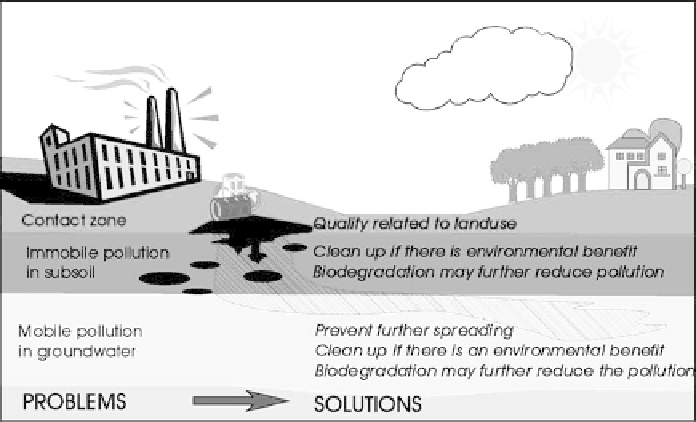Environmental Engineering Reference
In-Depth Information
23.7.3 Using Natural Capacities in the Soil and Water
Environment
Within the RBLM framework it becomes interesting to explore cost-effective
remediation options, using a conceptual model as illustrated in Fig.
23.5
.
In particular the question of how remediation approaches that use natural capac-
ities of soils or groundwater, like natural attenuation (see
Chapter 22
by Peter et al.,
this topic), can meet the general requirements for sustainability. For example, the
use of the soil for containment will have to meet the same requirements as other
containment techniques, such as waste disposal sites. These requirements will relate
to the need for the site to be fit for use, for sufficient protection of the environment
(including resource use) and for long-term care. One should also be aware that sites
may become commercially less attractive if long-term natural attenuation is used as
remediation, or immobile contamination remains in the soil. Many developers seem
to prefer land without use restrictions or obligations of long term care.
Another relevant issue is the extent to which the resource “soil” or “groundwater”
is considered as a resource to be protected as a receptor (irrespective of its use) and
not just as a pathway to other receptors, like sources for drinking water. In the EU
for example, the Groundwater Directive (
2006
/118/EC) prohibits any discharges of
hazardous contaminants into the groundwater. This may restrict the use of contami-
nants that enhance biodegradation. However, if the application of certain substances
in groundwater to stimulate natural attenuation is temporary, of short persistence
and has negligible long-term effects on the quality of the groundwater, it could be
Fig. 23.5
Exploiting the natural capacities of the soil and groundwater system in risk-based site
management

Search WWH ::

Custom Search